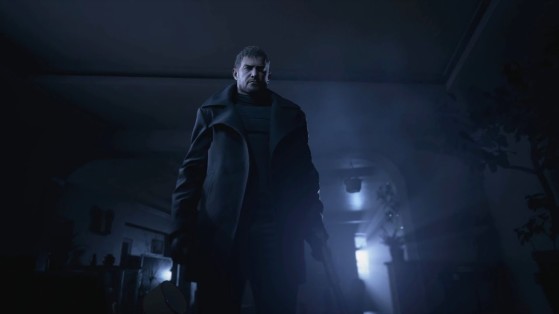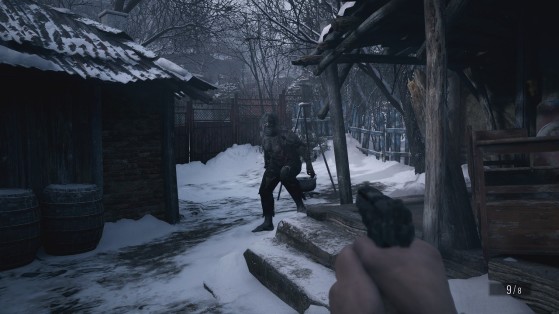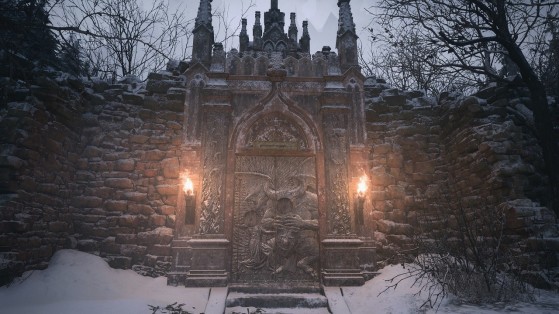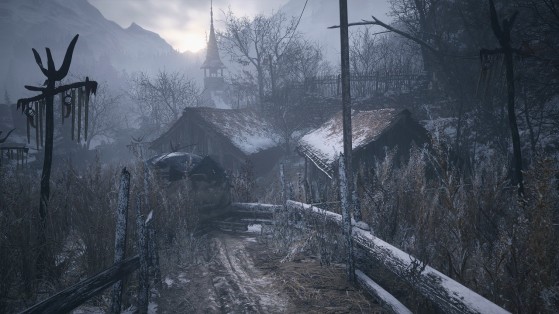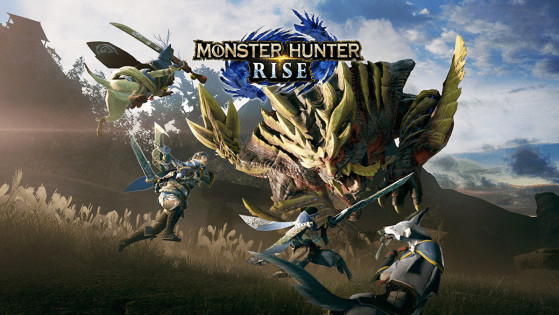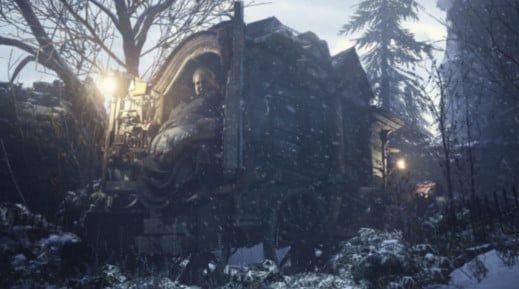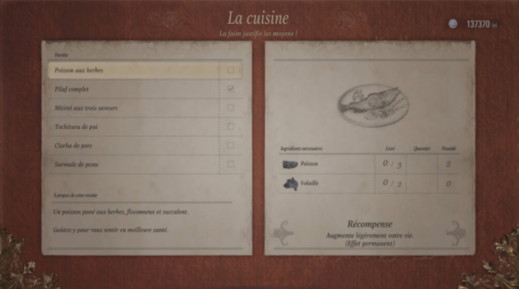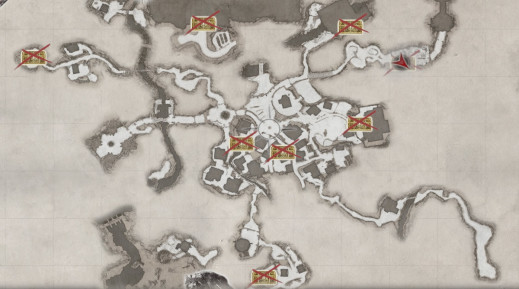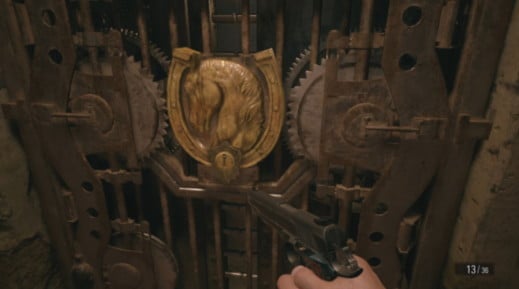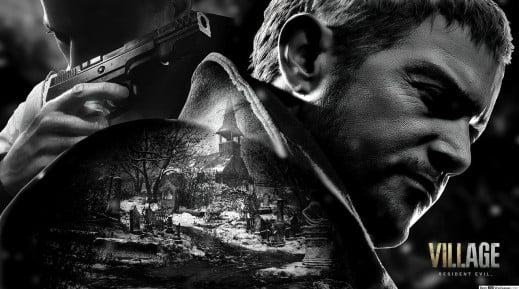Capcom managed to catch everyone off guard with Resident Evil 7, which managed to stand out from the mass of Outlast-style horror games and drawing on the roots from the franchise.
Despite a different perspective and a context far from the usual Umbrella shenanigans, it managed to give us a real Resident Evil experience.
Now, Capcom is pushing things even further with Resident Evil Village, which is in turn inspired by Resident Evil 4 — the episode that marked a real turning point for the series when released on 2005.
- Genre: FPS/Survival Horror
- Release date: May 7, 2021
- Platform: PC, PS4, PS5, Xbox One, Xbox Series
- Developer: Capcom
- Publisher: Capcom
- Price: $59,99
- Reviewed on: PC
Three years after the tragic events of Resident Evil 7, Ethan and Mia are living happily with their little girl, Rose. But when Chris Redfield interferes, Winters is thrown back into the darkness. The poor guy finds himself in the middle of Eastern Europe, in a dark village. The inhabitants seem to have a particular appetite for human flesh, while a family of four with supernatural powers weakens the ranks of the survivors.
The game is built around these four bosses — Mother Miranda and her Four Lords — with the heart of the village as the central hub. Each boss is associated with an area, the encounters with the bosses are scripted, and you will have to do missions in the village between those encounters.
Despite some big clichés, the plot is quite efficient and fits perfectly with the gothic architecture of the place. A few well-thought-out plot twists will even make Ethan — until now rejected by long-time fans of the series — a little more lovable. He now fully embodies this reboot of the Resident Evil series, one which has definitely not finished surprising us.
If RE7 managed to line up a few gunfights, it wasn't very convincing, and the limited bestiary didn't necessarily help. With their desire to infuse this new formula with the DNA of Resident Evil 4, Capcom has made the right choice: now semi-open-world, Village rewards advanced exploration and requires you to wander down many muddy paths if you intend to uncover everything from top to bottom.
Winters isn't any more athletic than before: he can't jump, his sprint is still a bit slow – you can still use the quick turn with low+round/B, but to dodge or absorb damage, you'll have to rely on the new guard mechanic. The enemies are quite agile and will quickly dodge and jump in order to get closer to you. However, the game still lacks a good part of the emblematic bestiary of the series.
There is clearly some improvement compared to RE7 though, especially with the bosses — although not always very interesting to face. Indeed, two acts — and two bosses — in the middle game are unfortunately quite dull.
Those two zones confirmed the first impression left at the beginning of the adventure: Resident Evil Village is a game designed for virtual reality. However, the game isn't compatible with HMD yet. It's possible that Capcom will release a VR version of the game in the near future, which we'll happily play. For now, as with RE7 at the time, this doesn't prevent Village from being quite enjoyable, even without PSVR.
We'll regret the overabundance of scripts and the vast majority of fights that will ask you to turn around a structure in the center of a room to trick the enemy, but overall, Village is quite enjoyable to play through. It has something to tell and it tells it at a frantic pace, there is a good amount of puzzles and small secondary objectives, just enough to enjoy scouring the village in search of its biggest treasures.
The inventory, weapon upgrades and other UI menus are all taken from RE4, to our satisfaction. As for the crafting system, it evolves slightly with more resources and a greater emphasis on making ammunition. As usual, in Resident Evil games, you can sometimes run out of ammo, which creates stressful situations. These are very fun sequences — reminiscent of the good old RE4 — but they are still a bit too rare, again because of too many scripts and a story that imposes its frantic rhythm on you. The fun is still there, but we feel that Capcom still has some room for improvement with this new formula.
For all the scaredy cats out there who wonder if they will survive the horrors of the village, RE8 is less "Outlastian" than its predecessor, but it still has some nice moments of horror: the Benedicio House and its possessed dolls, or the gloomy dungeons of Dimitrescu Castle come to mind — especially since the game doesn't skimp on gore and torture.
The length of the main campaign doesn't exceed ten hours if you look hard enough: the Resident Evils have always had a tendency to do "too much", but we have to admit that this episode stops at the right moment. Moreover, the game is based on sufficiently solid side content to push its lifespan to a good twenty hours, or even more for the completionists. Without revealing too much, many challenges can be unlocked, giving access to more or less important bonuses, from shooting sequences to the secondary mode Mercenaries.
The Mercenaries mode takes the well-known bases of the closed arena score hunt — which even had a dedicated game at the 3DS launch — but adds skills and regular returns to the store between each stage to improve your equipment.
We played on a 3080-based configuration, and Resident Evil Village is definitely a new demonstration of the RE Engine power. This PC version features a gauge system that will show you which settings are more demanding, as well as their impact on the game's graphic quality. The graphics are overall pretty good, and we often stopped to enjoy the panoramas.
As for the background music, it remains discreet enough that the ambient sounds aren't drowned out or their impact reduced.
Content translated from French by Laure Laborde.

